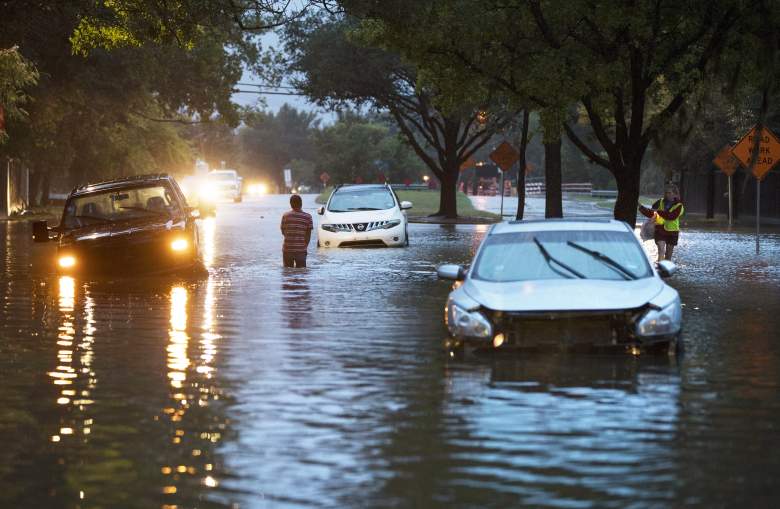
Getty Stranded vehicles sit where they got stuck in high water from Hurricane Harvey on Dairy Ashford Drive, August 28, 2017 in Houston, Texas.
Hurricane Harvey floodwaters should now start to recede, confirmed Fort Bend County Judge Robert Hebert this morning after the Brazos River crested at a record 55.18 feet.
The river has since lowered to 55.10 feet: “That’s a definite drop in the elevation of the river,” said Judge Hebert in a morning update published by the Fort Bend County Office of Emergency Management. Hebert went on to add that the river cresting signified that the area of inundation, or the area subject to flooding, should now cease to grow, and that residents could expect floodwaters to begin receding.
“You can travel freely in the county as long as it’s dry,” said Hebert, cautioning those that do venture out to check road closure maps to avoid the dangers posed by the many local roadways still underwater.
The judge added that the county would now be working to lift the mandatory evacuation order, allowing residents in affected areas to return to their homes as flooding abates. A 12 a.m. to 6 a.m. curfew remains intact countywide.
At least 40 people have lost their lives since Hurricane Harvey made landfall near Houston, Texas, on August 25, dropping almost 52 inches of rain and forcing nearly 34,000 people from their homes, according to ABC News. Hundreds of thousands remain without power, and a stall in the region’s oil refinery industry has caused fuel shortages that have resulted in fights erupting at gas stations across the state.
Though the river has crested, Center for Texas Beaches and Shores Director Dr. Samuel Brody told the New York Post that it could take more than a month for the floodwaters to completely recede. Large portions of Texas and Louisiana remain under Major Disaster Declarations as FEMA braces for the costly aftermath of the storm.